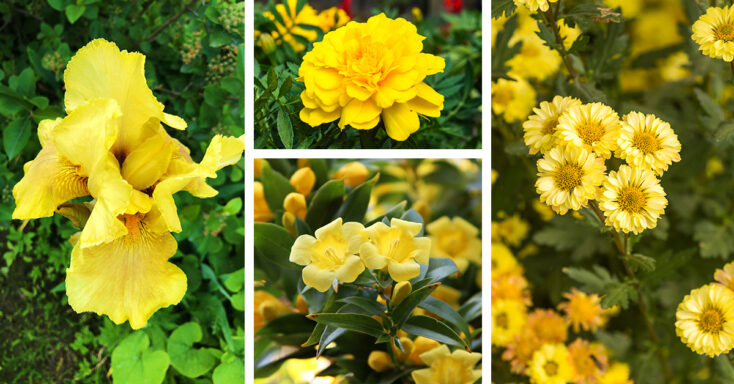Are you looking for a splash of color in your garden? Why not try some bright yellow flowers? Yellow flowers come in various shapes and sizes, and each has its own unique set of characteristics. Read on whether you are looking for a beautiful addition to your garden or simply want to know more about these beautiful yellow flowers.
27 Magical Yellow Flowers that will Make Your Garden More Vibrant
1. Black-Eyed Susan (Scientific Name: Rudbeckia Hirta)
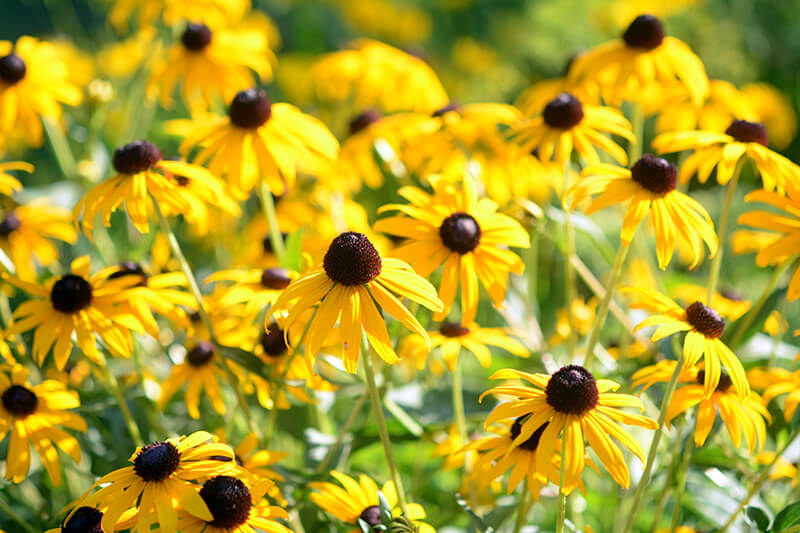
- 🔮 Symbolism: The flower symbolizes justice
- 💧 Water needs: The black-eyed Susan loves water and must be watered every day
- 🪴 Soil needs: It prefers moist and well-drained soil with a pH level between 6.5 to 7.05
- 🌍 Growing zones: 3 to 10
- ☀️ Light needs: Prefers full sun, although it can still grow in partial shade
- 🌱 Blooming season: June to October
This is a type of flower native to North America. It grows best in areas that have lots of sunlight and moist soil. It has bright yellow petals and a dark brown center. This flower is often used in bouquets and arrangements. One of the most important characteristics of the flower is its sweet aroma. This flower has a lovely scent that can fill up an entire room. The Black-Eyed Susan is usually planted in late spring or early summer, and it blooms from June through to October. It takes about six weeks for this flower to bloom fully, but once it does, you’ll have lots of pretty flowers on your hands!
2. Chrysanthemum (Mums or Chrysanths)
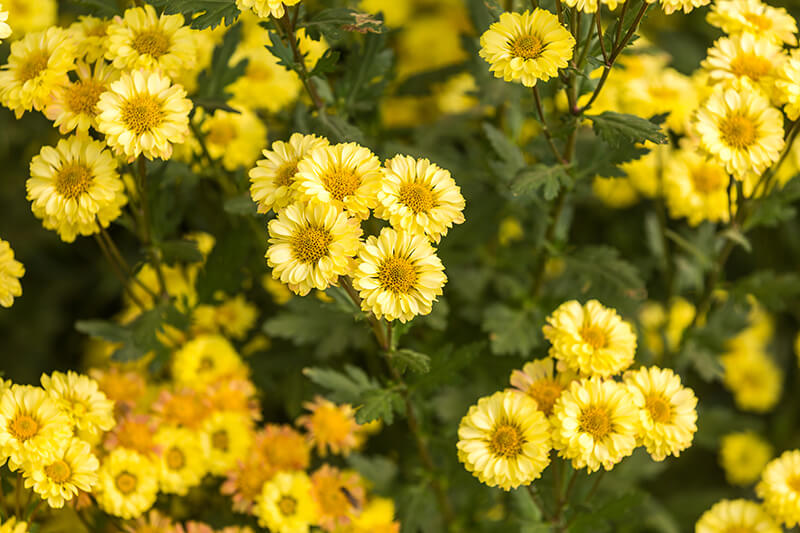
- 🔮 Symbolism: A yellow chrysanthemum symbolizes sorrow or neglected love
- 💧 Water needs: The chrysanthemum likes to stay moist
- 🪴 Soil needs: Chrysanthemums prefer rich, well-draining soil with lots of organic matter
- 🌍 Growing zones: 5 to 9
- ☀️ Light needs: Full sun
- 🌱 Blooming season: Late July to October
The chrysanthemum is a flower that comes in many different colors and sizes. It grows best in areas that have lots of sunlight and moist soil. The chrysanthemum has bright yellow petals and a dark brown center. This flower is often used as cut flowers, but you can also plant it directly into the ground, where they will grow happily for years to come.
3. Bird of Paradise (Scientific Name: Strelitzia Reginae)
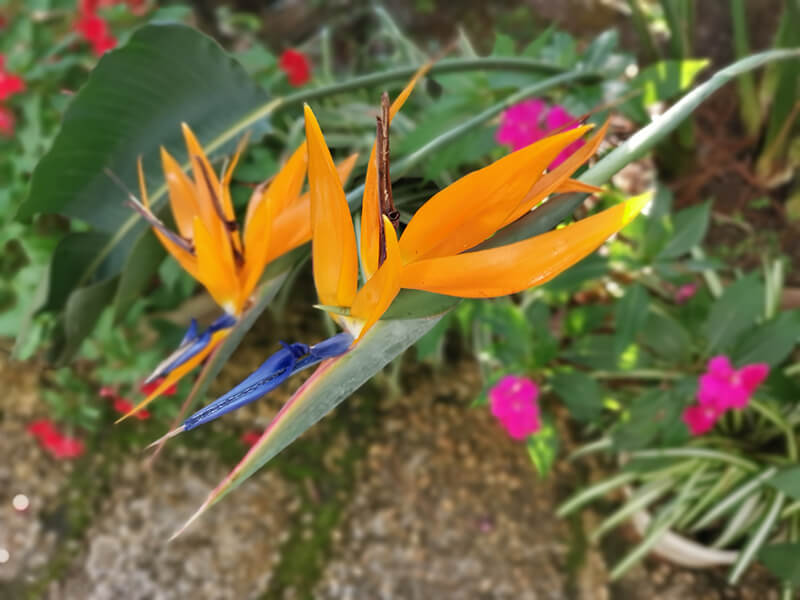
- 🔮 Symbolism: Faithfulness, thoughtfulness, and love
- 💧 Water needs: Weekly
- 🪴 Soil needs: Well-drained soil (mulch is recommended)
- 🌍 Hardiness zones: 10 to 12
- ☀️ Light needs: Full sun or partial shade
- 🌱 Blooming season: Mid-December
Bird of paradise is a tropical plant that produces orange and blue flowers from December through May. This perennial features large, banana-like leaves with striking, bird shaped flowers held aloft on stems above the foliage. A member of the banana family (Musaceae), this broadleaf evergreen grows in U.S. Department of Agriculture plant hardiness zones. The double bloom of this kind of flower is known as a flowering bush, and it has two flowers that will undoubtedly grab people’s attention.
4. Busy Lizzie (Scientific Name: Impatiens Walleriana)
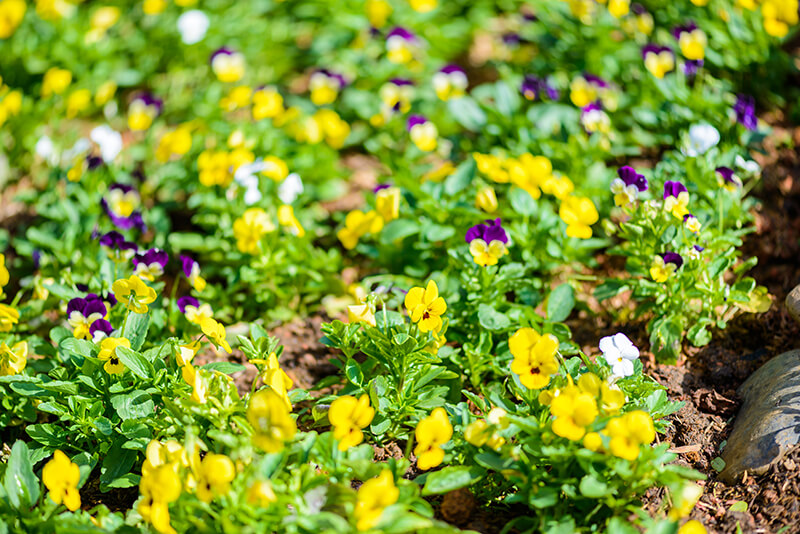
- 🔮 Symbolism: Motherly love
- 💧 Water needs: Requires at least two inches of water weekly
- 🪴 Soil needs: Rich and well-manured soil with a pH of between 6 and 7
- 🌍 Hardiness zones: 2 to 11
- ☀️ Light needs: Full sun
- 🌱 Blooming season: Spring
The Busy Lizzie is a partial shade loving annual that originated in East Africa. It was named after Elizabeth of Brunswick, who was the wife of Frederick William I of Prussia. She had earned her nickname “Busy Lizzie” due to her incessant gossiping and interfering in affairs. The flower thrives best when planted near other plants with dark foliage or a dark backdrop, so its brilliant yellow color can show up better. It’s one of the most popular flowers worldwide, and it comes in many varieties like New Guinea impatiens which have large leaves and beautiful patterns on them.
5. Calendulas (Scientific Name: Calendula Officinalis)
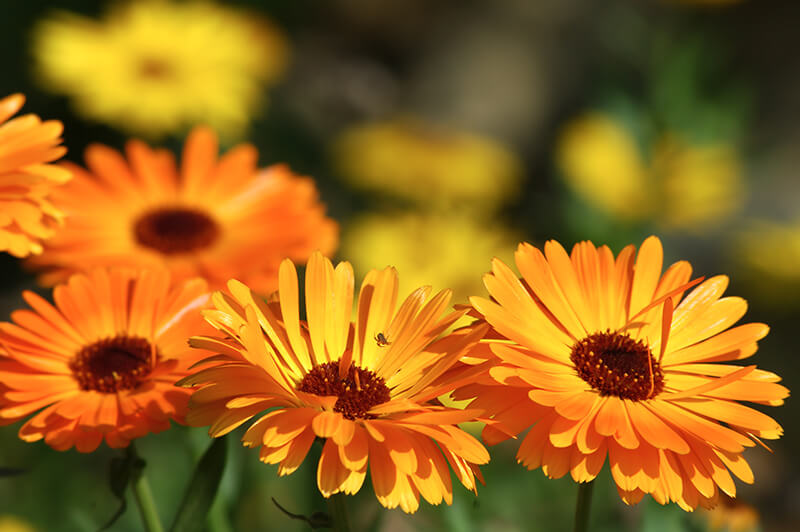
- 🔮 Symbolism: Grief, despair, and sorrow
- 💧 Water needs: Calendulas require between 1 and 1 1/2 inches of water weekly
- 🪴 Soil needs: These yellow flowers require well-drained soil with high organic material
- 🌍 Hardiness zones: 9 to 11
- ☀️ Light needs: Full sun or partial shade
- 🌱 Blooming season: May to early Fall
These are some of the most popular types of yellow flowers. They are known for their bright yellow colors and healing properties, especially skin. You can use them in salads, garnish, or tea. Calendulas are also known to attract bees and butterflies.
6. Canna Lily (Canna)
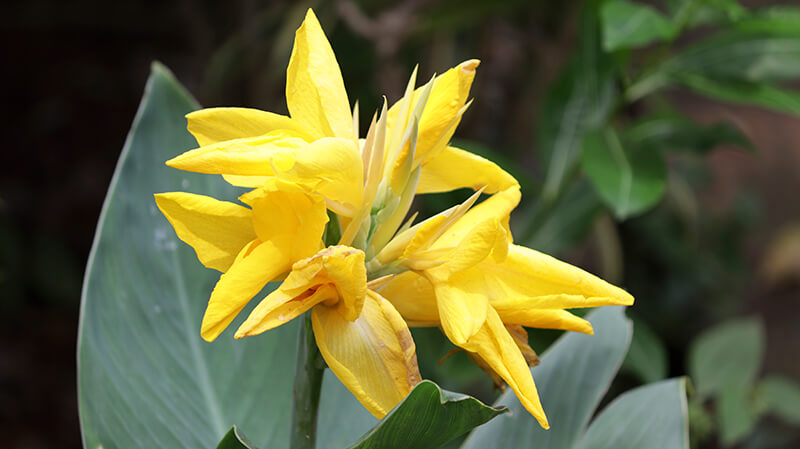
- 🔮 Symbolism: Glory and power
- 💧 Water needs: At least one to two inches of water weekly
- 🪴 Soil needs: These yellow flowers prefer rich, water-retentive, and well-drained soils high in organic matter
- 🌍 Hardiness zones: 9 to 10
- ☀️ Light needs: Full sun
- 🌱 Blooming season: Mid-summer to fall
Canna lilies are native to southern North America, Central America, and the West Indies. They are also popular types of yellow flowers that grow from tubers or rhizomes, which multiply rapidly in tropical areas where you can plant them outside year-round. Larger cannas may grow up to 12 feet tall and spread about three feet. This yellow flower plant thrives in full sun (six hours per day or more) but tolerate partial shade for half a day if temperatures are high. Yellow flowers bloom all summer until frost kills the plants back, then you harvest the rhizomes for replanting next spring when the weather warms again.
7. Carnation (Scientific Name: Dianthus Caryophyllus)
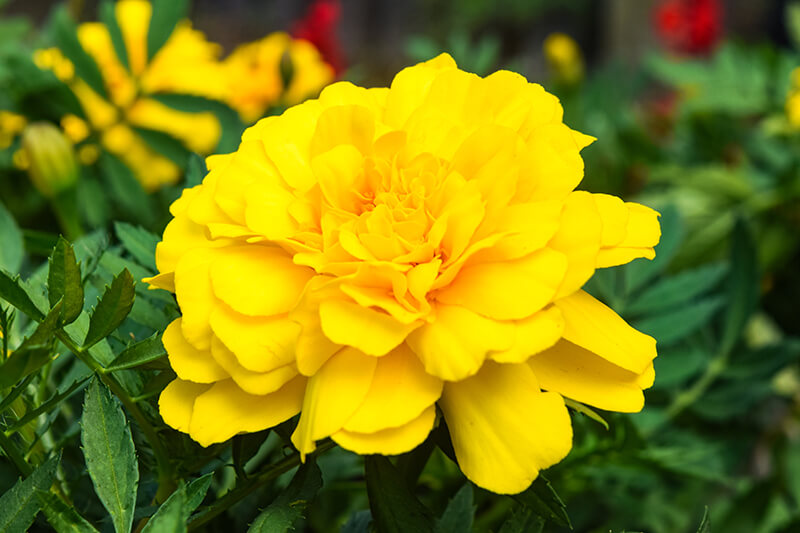
- 🔮 Symbolism: Love
- 💧 Water needs: They need to be watered once or twice a week
- 🪴 Soil needs: Well-draining, fertile soil
- 🌍 Hardiness zones: 5 to 9
- ☀️ Light needs: Full sun
- 🌱 Blooming season: From late spring, normally May
The carnation is one of the most popular types of yellow flowers in the world. There are over 200 different species of carnations, but the most common type is garden carnation. Carnations are not only cool, but also come in various colors, including pink, red, white, and yellow. They have a long history; they were first cultivated in Greece more than 2500 years ago! Carnations are known for their fragrance; many people describe them as sweet and floral. They also have a long vase life; they can last up to two weeks when properly cared for. Lastly, carnations are relatively easy to care for; they only need water and sunlight to thrive. If you’re looking for a beautiful, fragrant, and easy-to-care-for flower, carnations are a great choice!
8. Bulbous Buttercup (Scientific Name: Ranunculus Bulbosus)
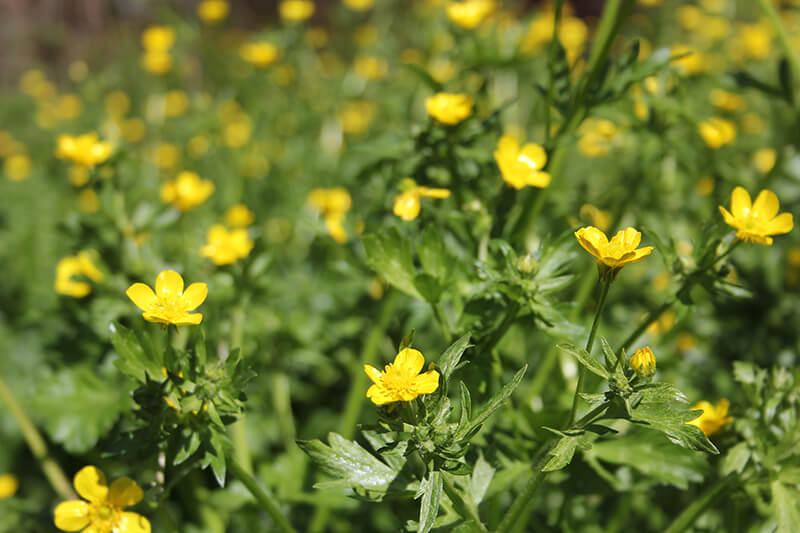
- 🔮 Symbolism: Joy, youth, friendship, and happiness
- 💧 Water needs: It requires one inch of water weekly throughout its blooming period
- 🪴 Soil needs: Well-drained soil
- 🌍 Hardiness zones: 8 to 11
- ☀️ Light needs: Full sun or partial shade
- 🌱 Blooming season: April to June
The bulbous buttercup is a small yellow flower plant that grows to about 15 cm high and has bright yellow flowers. It is native to most Europe, western Asia, and northwest Africa. The flower blooms in early summer between May and July. The leaves die back shortly after the seeds have matured in late summer, reappearing the following spring from deep underground bulbs (hence its common name). Its scientific name means “little frog” because it often grows near water.
9. Begonia (Scientific Name: Begonia Obliqua)
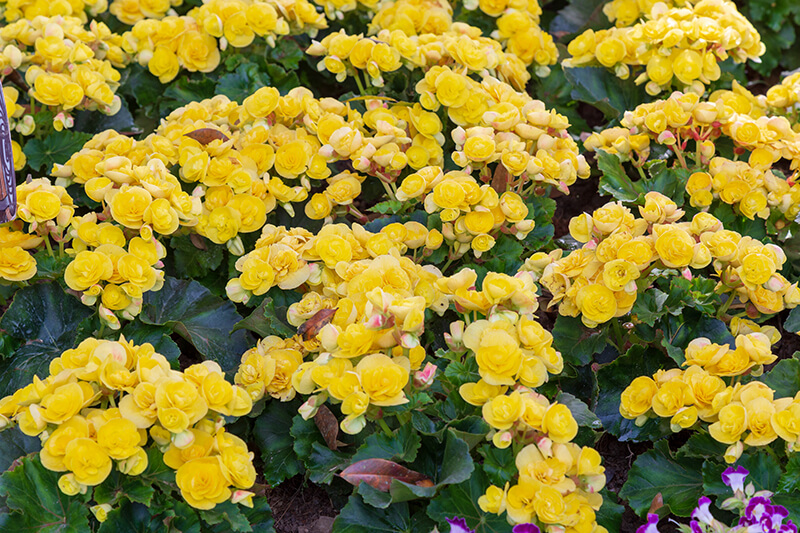
- 🔮 Symbolism: Caution
- 💧 Water needs: The flower requires water every 2 to 4 days
- 🪴 Soil needs: Light, fertile, and well-drained soil
- 🌍 Hardiness zones: 9 and 10
- ☀️ Light needs: Full sun or partial shade
- 🌱 Blooming season: Early summer until frost
There are over 1000 species of begonias, making it a mixed flower with many different colors and shapes. The Begonia Obliqua is a flowering tuberous begonia with yellow blooms. These blooms can grow up to three inches in diameter and sweet fragrance. Begonias are easy to care for and thrive in indoor and outdoor settings. They make great additions to gardens, landscapes, and containers. One important characteristic of begonias is their ability to tolerate low light levels. This makes them ideal flowering plants for indoors or shaded areas outdoors. They also require little water, making them perfect for people who live in dry climates. Begonias are typically planted in the spring but can be planted at other times throughout the year if necessary.
10. Daffodil (Scientific Name: Narcissus)
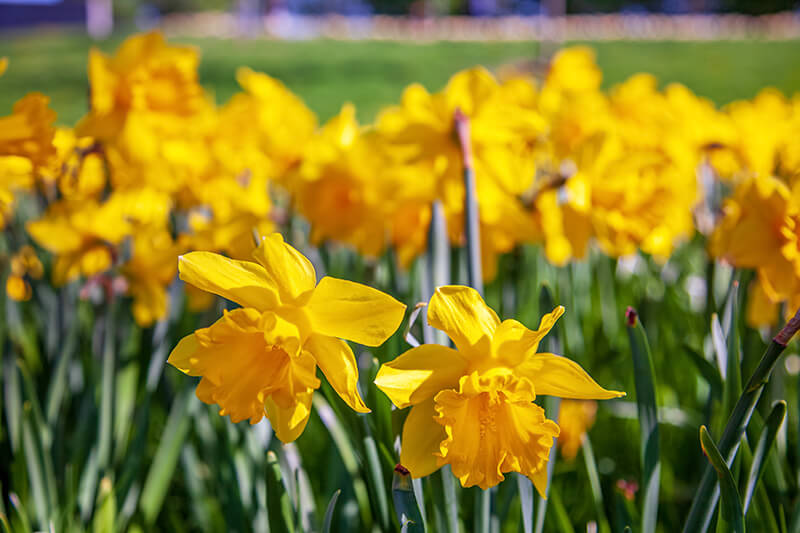
- 🔮 Symbolism: Rebirth and new beginnings
- 💧 Water needs: They require water weekly
- 🪴 Soil needs: Neutral to slightly acidic soil with a pH of 6
- 🌍 Hardiness zones: 3 to 8
- ☀️ Light needs: Full sun or partial shade
- 🌱 Blooming season: Late winter and spring
The daffodil is a type of narcissus flower that can come in various colors, such as yellow, white, and orange. They are often grown as spring flowers and bloom naturally in meadows and woodlands. Daffodils have long been associated with Easter celebrations due to their early blooming times. One of the most notable characteristics of daffodils is their fragrance. Their delicate aroma has been described as sweet, honey-like, or fruity. In addition to smelling nice, these yellow flowers also look pretty when they’re in bloom. They typically have six petals apiece and grow in trumpet shaped flowers.
11. Gerbera Daisy (Scientific Name: Daisy Gerbera Jamesonii)
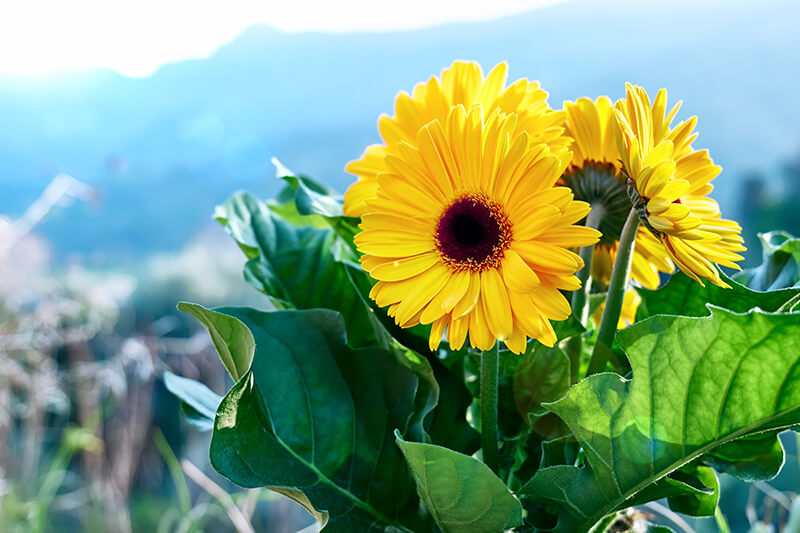
- 🔮 Symbolism: Cheerfulness and celebration
- 💧 Water needs: Around one inch of water per week
- 🪴 Soil needs: Gerbera daisies require soil with a pH of around 5.5 to 6.5
- 🌍 Hardiness zones: 8 to 10
- ☀️ Light needs: Full sun
- 🌱 Blooming season: Late spring through autumn
The Gerbera Daisy is a popular yellow flower plant. They come in a variety of colors but are mostly known for their bright yellow petals. Gerberas are considered easy to care for and can last up to two weeks with proper care. One important characteristic of Gerbera Daisies is that bees pollinate them. This means that if you’re growing them outdoors, it’s important to provide a bee-friendly habitat nearby. Gerberas do best in full sun and well-drained soil.
12. Bear’s Ear (Scientific Name: Primula Auricula)
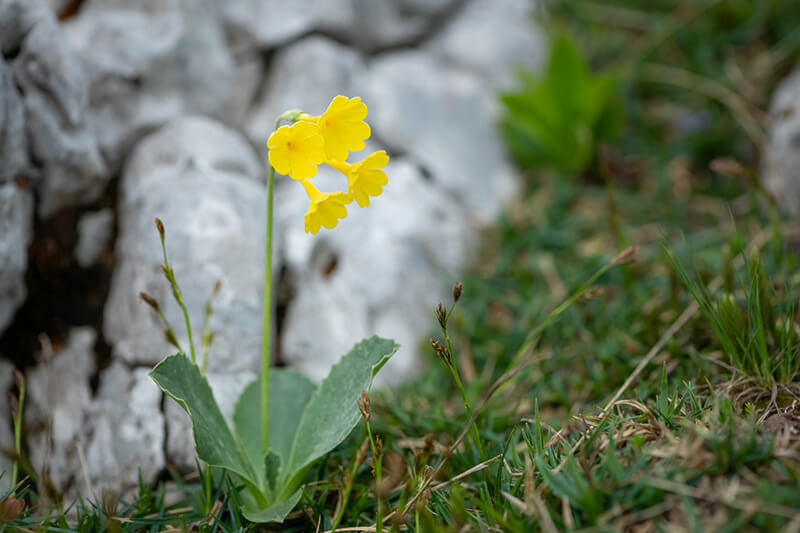
- 🔮 Symbolism: Deserved merit
- 💧 Water needs: Requires water weekly
- 🪴 Soil needs: Sandy, loamy, and heavy soils
- 🌍 Hardiness zones: 3 to 8
- ☀️ Light needs: Partial shade
- 🌱 Blooming season: Mid to late spring
The Bear’s Ear (Scientific Name: Primula Auricula) is a beautiful yellow flower plant found in the wild throughout Europe. It gets its name from the shape of its leaves, which are said to resemble a bear’s ears. The flowers themselves are about an inch across and have five petals. They bloom in the beginning of spring and can often be seen growing alongside daffodils and bluebells.
13. Goldenrod (Scientific Name: Solidago)
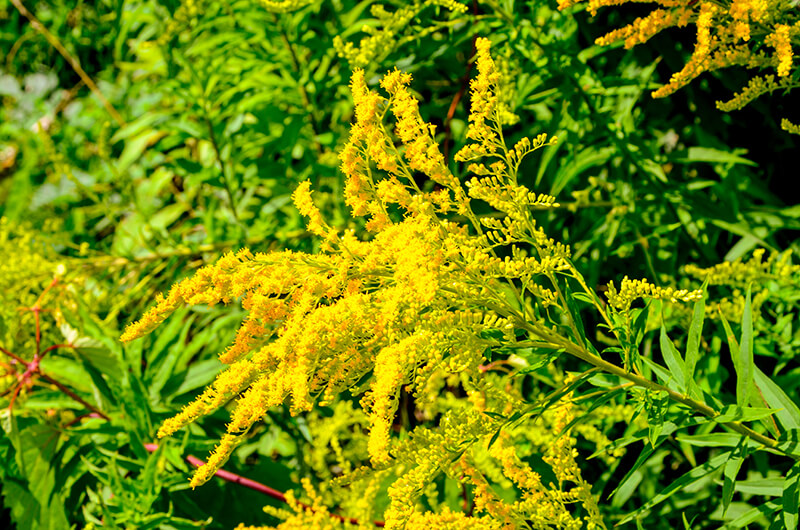
- 🔮 Symbolism: Wealth, prosperity, and happiness
- 💧 Water needs: This flower needs to be watered weekly
- 🪴 Soil needs: Average soil with decent drainage
- 🌍 Hardiness zones: 4 to 9
- ☀️ Light needs: Full sun
- 🌱 Blooming season: From late August to early October
Goldenrod is a versatile yellow flower plant that can be used for both garden beds and borders. It blooms in late summer, with small yellow flowers on wiry stems above the narrow leaves of this clump-forming perennial. Goldenrod thrives in well-drained soil and full sun to partial shade.
14. Hibiscus (Scientific Name: Hibiscus Hamabo)

- 🔮 Symbolism: Happiness, sunshine, and good luck
- 💧 Water needs: Around 1 to 2 inches of water weekly
- 🪴 Soil needs: Well-drained soil
- 🌍 Hardiness zones: 10 to 12
- ☀️ Light needs: Full sun
- 🌱 Blooming season: From mid to late summer
Hibiscus comes in a variety of colors. It is also known as the Rose of Sharon or shrub althea and belongs to the Malvaceae family, including hollyhock and okra. Hibiscus flowers are trumpet-shaped, five-petaled, and three to twelve inches across.
The flowers bloom all summer long on large bushes with glossy green leaves. Each blossom lasts only one day, but there are so many blooms that it can seem like they’re always in flower!
15. Leontodon Flower (Leontodon)
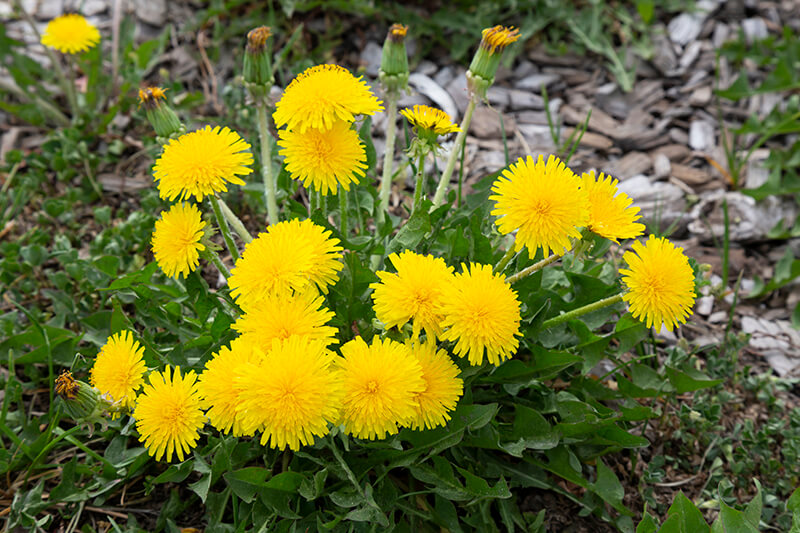
- 🔮 Symbolism: Lion’s tooth
- 💧 Water needs: It needs water weekly
- 🪴 Soil needs: Well-drained, alkaline soil
- 🌍 Growing zones: 5 to 9
- ☀️ Light needs: Full sun
- 🌱 Blooming season: From late May to October
The leontodon flower is a yellow-colored flower with thin, long stems and small petals. The plant can grow to be up to 80 centimeters in height. From late spring until mid-autumn, the flowers bloom on top of the stem at the beginning of each month. The plant grows from underground bulbs and can live for many years as long as it’s taken care of properly (as described below).
16. Iris Flowers (Iris)
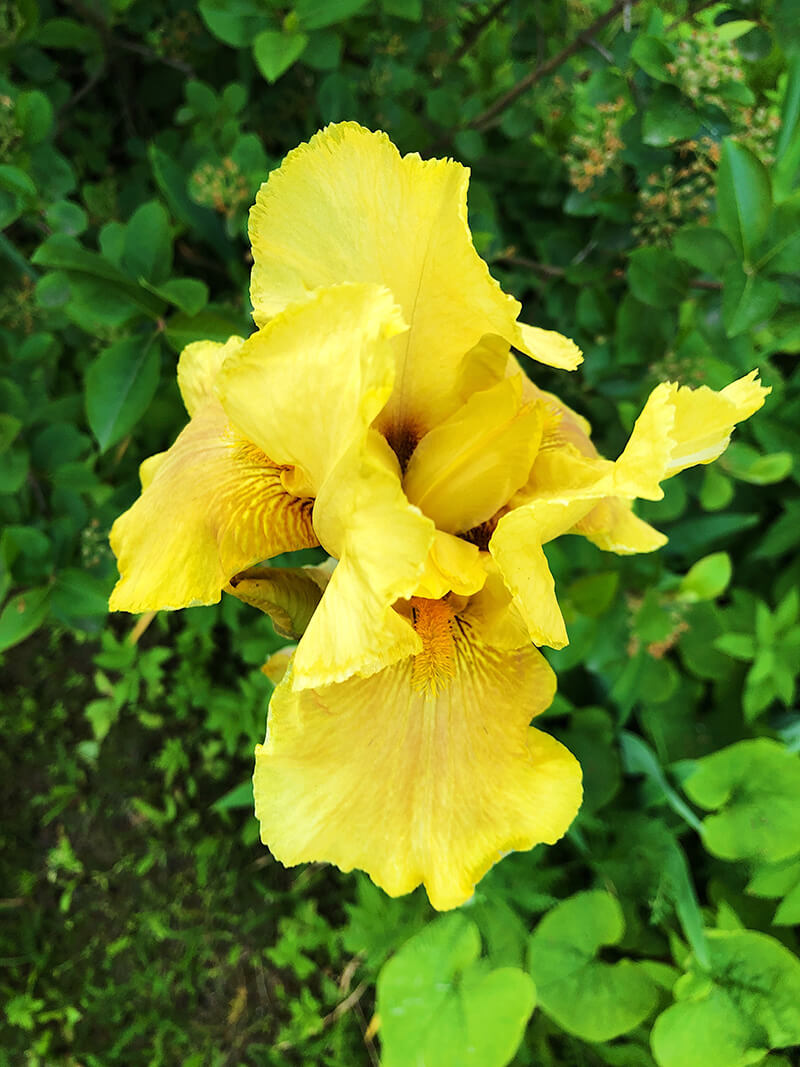
- 🔮 Symbolism: Wisdom, hope, valor, and trust
- 💧 Water needs: They require deep soaking often
- 🪴 Soil needs: Rich, moist, and well-drained soil
- 🌍 Growing zones: 5 to 9
- ☀️ Light needs: Full sun
- 🌱 Blooming season: Spring or summer
Iris flowers are a colorful and bold addition to your flower garden. There are many different iris flowers, but they all share some common characteristics. Iris flowers have long, sturdy stems that hold up their heavy blooms. The petals are usually broad and flat and come in a variety of colors, including yellow, blue, purple, and white. Some iris varieties also have interesting markings on their petals.
17. Carolina Jasmine (Gelsemium Sempervirens)
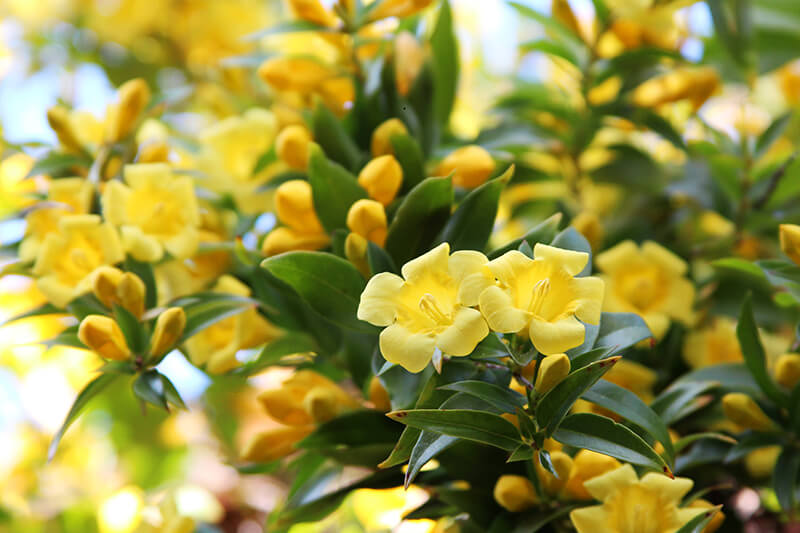
- 🔮 Symbolism: The pureness of the gold
- 💧 Water needs: It needs to be watered twice a week
- 🪴 Soil needs: Well-drained soil
- 🌍 Growing zones: 7 to 10
- ☀️ Light needs: Full sun/partial shade
- 🌱 Blooming season: Late winter to early spring
The Carolina Jasmine is a gorgeous yellow flower plant found in the southeastern United States. This flower is known for its sweet fragrance and delicate blooms. The Carolina Jasmine grows best in full sun or partial shade, and it prefers moist soil. This flower is often used in landscaping projects because of its showy blooms and fast growth rate. It can also be grown in containers, making it a popular choice for gardeners who lack space. The Carolina Jasmine flowers from late winter to early spring, making it a great addition to any flowers garden.
18. Bulbine Frutescens (Scientific Name: Bulbine Frutescens)
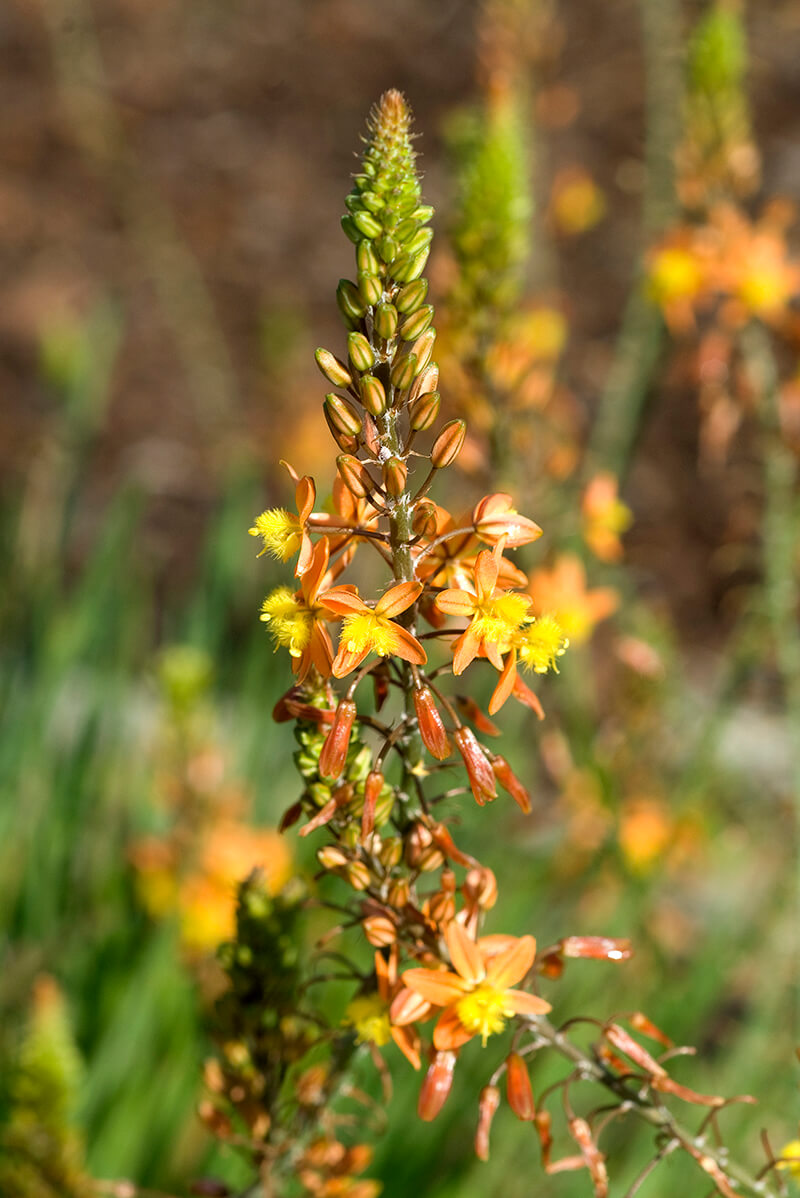
- 🔮 Symbolism: It symbolizes an onion or bulb
- 💧 Water needs: It needs to be watered twice a week
- 🪴 Soil needs: Well-drained soil
- 🌍 Growing zones: 9 to 11
- ☀️ Light needs: Full sun
- 🌱 Blooming season: From mid-spring through fall
A perennial succulent with striking yellow flowers, this plant is often used to provide color and texture in gardens. It has a wide variety of uses, such as being used for medicine or as bee forage. Keep in mind that the foliage may be toxic if ingested, so don’t have it near areas where children play. It also does well when planted next to flowering plants with silver leaves like rosemary and lavender because the contrast looks very attractive together. This flower blooms from late summer into fall with dark green leaves on long flower stalks above ground level, while most roots are below ground level growing up through cracks in rock outcroppings. Over time, they form large clumps if left unchecked but can easily be removed.
19. Lesser Calendine (Scientific Name: Ficaria Verna)
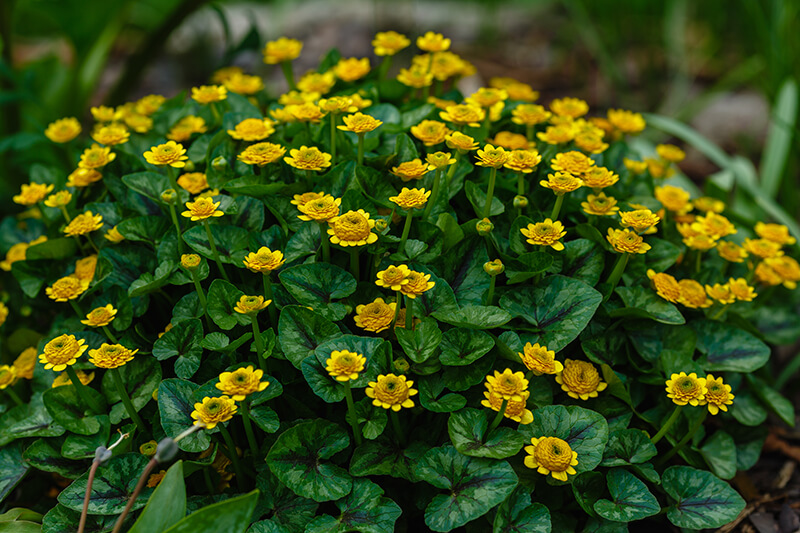
- 🔮 Symbolism: Hope and joy
- 💧 Water needs: It needs water often
- 🪴 Soil needs: Moist soil, drought tolerant
- 🌍 Growing zones: 3 to 9
- ☀️ Light needs: Full shade or full sun
- 🌱 Blooming season: March to April
You can find the Lesser Calendine flower in many gardens. It has a long stem and delicate flowers that bloom in the springtime. The leaves are also very pretty, with a deep green color and purple veins. The Lesser Calendine is a perennial which comes back every year. It’s also drought tolerant, meaning it can survive in dry conditions. This makes it an ideal flower for gardens in hot climates. One of the best things about the Lesser Calendine is its fragrance. The flowers smell sweet and floral, making them a lovely addition to any garden.
20. Pansy (Viola Tricolor)

- 🔮 Symbolism: Love
- 💧 Water needs: One inch of water weekly when it’s actively growing
- 🪴 Soil needs: It requires acidic soil with a pH of between 5.4 and 5.8
- 🌍 Growing zones: From 6 and above
- ☀️ Light needs: Full sun
- 🌱 Blooming season: From September to May
The pansy is an annual or short-lived perennial. The rhizomatous, stout roots are up to 15 cm deep and can overwinter soil. It grows upright, sometimes even a little ascending, reaches heights of 30 cm (up to 80 cm). The hairless stems are branched at times and slightly angled. Pansies may appear single or double depending on the variety. Single flowers have one row of petals. Double flowers have many rows of petals that come from numerous stamens turned into petaloid structures called “petaloid” because they resemble petals but lack their color.
21. Marigold (Tagetes)
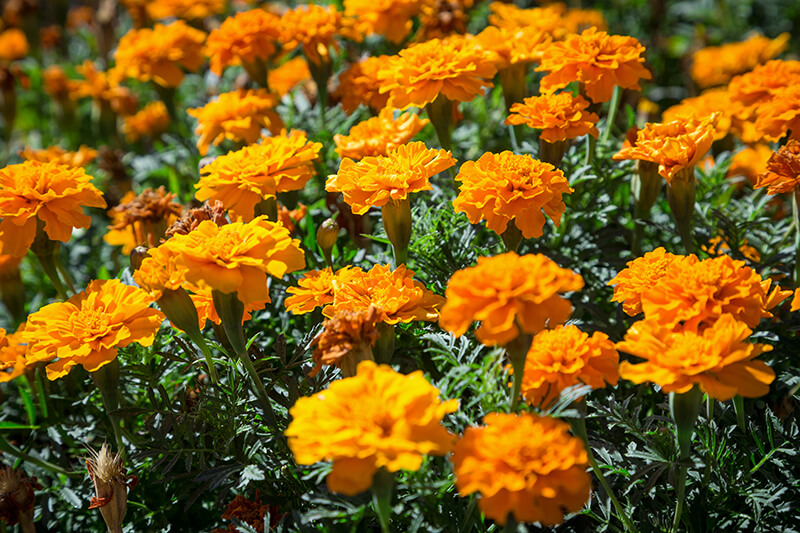
- 🔮 Symbolism: A feeling of despaired love
- 💧 Water needs: They need water once a week
- 🪴 Soil needs: Neutral soil with a pH of between 6.0 and 7.0
- 🌍 Growing zones: 2 to 11
- ☀️ Light needs: Full sun
- 🌱 Blooming season: From summer to fall
The marigold is a cheerful flower that blooms in the summer. There are many different marigolds, but all share some common characteristics. For example, they are all bright yellow or orange and have a strong scent. Marigolds are easy to grow, and they make a great addition to any garden. One of the best things about marigolds is their ability to repel pests. The flowers’ strong scent keeps insects away, which makes them a good choice for gardens with vegetables or other flowering plants that tend to be pest-prone. Marigolds can also be used as an herb. You can add the leaves to food to give it a slight flavor boost.
22. Primrose (Primula Vulgaris)
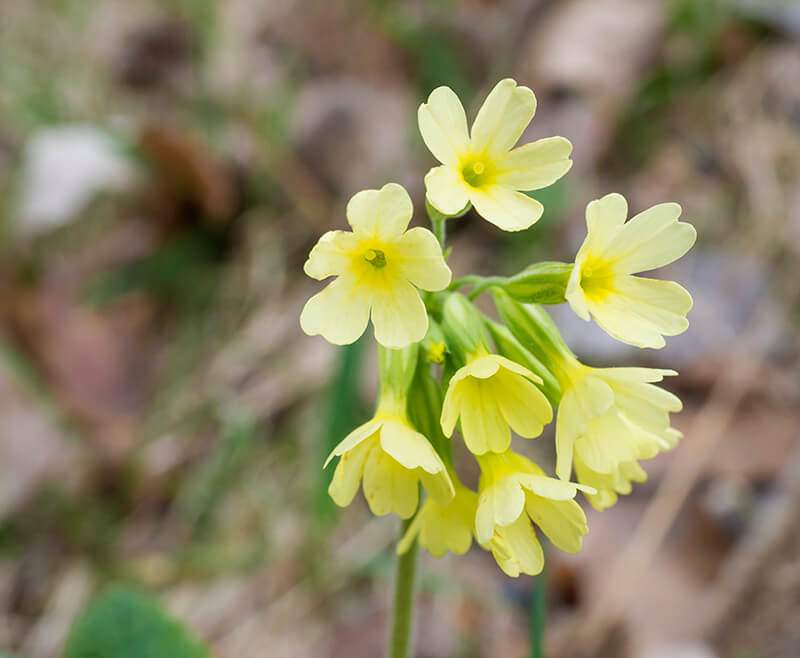
- 🔮 Symbolism: Protection, safety, and love
- 💧 Water needs: Consistent water to keep them moist
- 🪴 Soil needs: Moist soil
- 🌍 Growing zones: 4 to 8
- ☀️ Light needs: Partial sun
- 🌱 Blooming season: From beginning of spring to late spring
The Primrose is a classic spring flower that grows well in pots or gardens. It can be grown from seeds sown in autumn or bought as young plants and planted after frosts. Award-winning primrose varieties include: ‘Cowichan’ with large flowers; ‘Polar Star’, with pure white flowers on short plants; and ‘Lilac Pink’ for its fragrant pink blooms. Primroses require winter protection when growing them outdoors. They can be used in borders, rock gardens, woodland areas, and containers in all zones if proper attention is given to watering, mulching, and protecting during winter months.
23. Sunflower (Helianthus)

- 🔮 Symbolism: Good luck and lasting happiness
- 💧 Water needs: One inch of water per week
- 🪴 Soil needs: Slightly acidic or alkaline soil
- 🌍 Growing zones: 2 to 11
- ☀️ Light needs: Full sun
- 🌱 Blooming season: From summer through autumn
Sunflowers are one of the most iconic yellow flowers and are easily identifiable by their large petals. Sunflowers are native to North America and can be found in various habitats, including meadows, fields, and gardens. They grow best in full sunlight and rich, sandy soil. Sunflowers typically reach six to twelve feet tall and make an impressive addition to any garden.
24. Yellow Lily (Lilium Canadense)

- 🔮 Symbolism: Happiness and cheer
- 💧 Water needs: 1 inch of water weekly
- 🪴 Soil needs: Sandy
- 🌍 Growing zones: 5 to 9
- ☀️ Light needs: Full sun
- 🌱 Blooming season: From early summer to fall
The yellow lily is a beautiful flower found in many gardens. It has a trumpet-like shape and blooms in the summertime. The petals are soft and delicate, and the flower itself is quite large. Some people believe that the lily symbolizes purity, which makes it a popular choice for weddings and other special occasions. One of the most distinctive features of the yellow lily is its smell. Many people describe it as sweet and fragrant. This makes lilies such a popular choice for weddings, funerals, and other commemorative events.
25. Yellow Cestrum (Cestrum Aurantiacum)
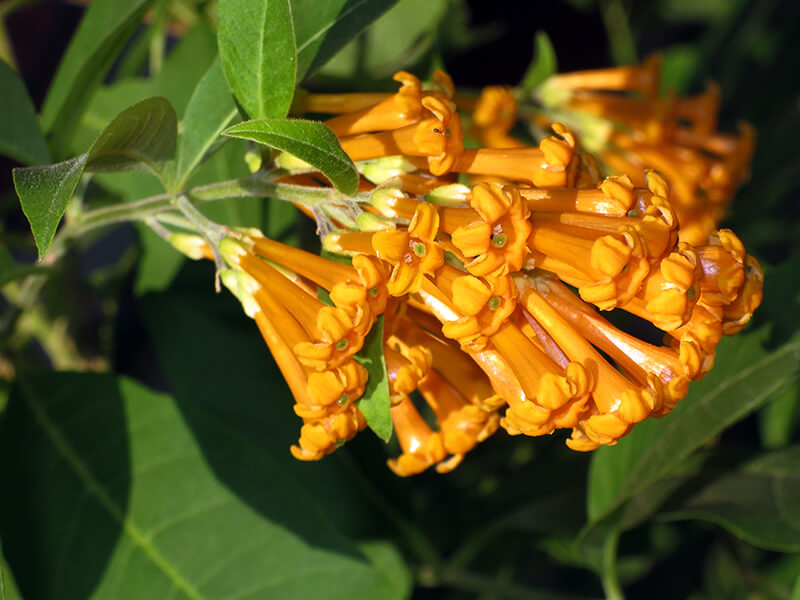
- 🔮 Symbolism: Joy and happiness
- 💧 Water needs: Occasional watering
- 🪴 Soil needs: Fertile, well-drained, and non-alkaline soil
- 🌍 Growing zones: 7
- ☀️ Light needs: Full sun
- 🌱 Blooming season: From late spring or summer
The yellow Cestrum has a unique and unmistakable fragrance, often described as sweet and floral. The flower’s petals are a deep yellow, with a slightly darker center. The flowers of the yellow Cestrum are very long-lasting and can remain fresh for up to two weeks. They are also incredibly easy to care for – they require very little water and no sunlight. This makes them the perfect choice for gardeners who don’t have much time to devote to their plants.
26. Yellow Oleander (Cascabela Thevetia)
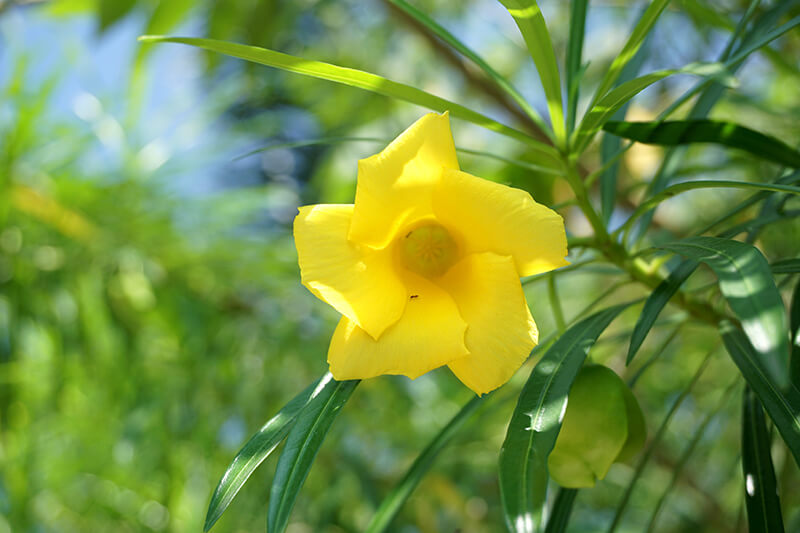
- 🔮 Symbolism: Nature of love and relationships
- 💧 Water needs: 1 to 2 inches of water weekly
- 🪴 Soil needs: Alkaline-based soil
- 🌍 Growing zones: 8 to 10
- ☀️ Light needs: Full sun
- 🌱 Blooming season: From June to October
Yellow oleander is a tropical evergreen tree with high ornamental value. It can reach up to 20 feet tall and has yellow, funnel shaped flowers that bloom year-round. The plant requires full sun and does not tolerate frost. If you live in a cold climate, grow it annually or keep it indoors during the winter months. Yellow Oleanders are toxic when consumed by humans or pets, so exercise caution if you have children around the house or pets roaming your garden area.
27. Ranunculus (Persian Buttercup)
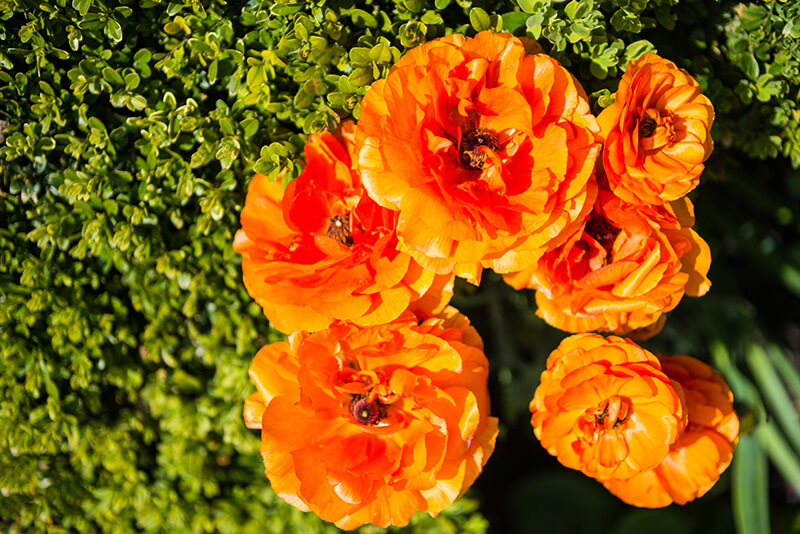
- 🔮 Symbolism: Charm
- 💧 Water needs: It requires regular watering
- 🪴 Soil needs: Moist and well-drained soil
- 🌍 Growing zones: 8 to 10
- ☀️ Light needs: Full sun
- 🌱 Blooming season: From late winter or spring
The ranunculus is a beautiful, delicate flower with many different characteristics. It is a very elegant-looking flower—a great choice for those who want to add elegance to their garden or arrange them in bouquets. The petals are usually yellow and white, but there are also pink, red, and orange flower varieties that you can try out if you want something more vibrant than classic yellows. They look best placed on simple green grass or leaves as they don’t need any other flowers to make themselves shine brighter. With time they will become one of your favorite ones.
27 Yellow Flowers to Inspire You This Season
Hopefully, you were able to find the right flowers for your garden. You need to know that these types of flowers need full sun and well-drained soil. With a little bit of effort, you can have beautiful blooms in your garden all season long. Happy gardening!


